As a result, people try meditation, mindfulness or mindfulness meditation, and when it doesn’t do what the fantasy writers say it will do, they give up and dismiss it as nonsense.
So today, I’m going to explain exactly what you can expect from mindfulness/meditation and throw in a few tips along the way.
You will have read this about mindfulness meditation before: mindful meditation has many health benefits and can improve your relationships, wealth and general well-being.
All this is true, but before you reap the benefits, you need to understand what mindfulness meditation is and the various ways of doing it properly. You then have to practice mindfulness and meditation on a daily basis for it to have any real effect.
The good news is you already meditate without even realising it. All you really need to learn are new habits so that you consciously perform mindfulness throughout the day.
When meditation – or mindfulness – is mentioned to some people, they instantly repeal it as spiritual bullshit. But mindfulness meditation is far from being a pretentious exercise practised by oddballs who believe in fairies.
Furthermore, you don’t have to sit in a traditional lotus posture to practice meditation. You can meditate whilst sitting upright in a chair, laying down, standing up, walking, on a bus, ironing, washing the pots or anywhere else where you have the chance to bring your mind to rest.
Opinions about mindfulness – and opinions on many other topics people have – are often unfounded. People are quick to demolish meditation and anything remotely different to general views of life even though they have no knowledge or experience about the subject.
Subsequently, there is a misconception of what meditation is because it has been built up as some grandiose experience you can have that is akin to flying through space.
Meditation is actually just another way of saying ‘concentration.’ Mindfulness is merely directing your attention so that you are consciously in control of your thoughts, emotions and actions.
Now you don’t have to believe in fairies to want to be in control of your emotions, thoughts and actions do you; after all, emotions, thoughts and actions are the triangle of manifestation where all life’s magic – and tragedies – are born.
The key element to mindfulness is being consciously aware of the experience you are having in each moment. It involves giving your full attention to whatever it is you are doing at any given time.
Living in the moment is another one of those buzzwords that make people scoff. And yes, it is hard to do at every moment of the day. But with practice, you eventually accrue a sense of just being. A human being, not a human doing.

There is no need to worry about the future before today is over. There is no reason for you to repeat a conversation in your head and wish you had said something else. There is certainly no reason to let your monkey mind chatter to you when you need to sleep.
But we all do these things. We do these things out of habit. Our brain is trained to talk, worry, stress, and run away with our higher-conscious thoughts. Mindfulness meditation is a means of training your brain to be peaceful.
There are plenty of occasions throughout the day where you can keep your mind still. I mentioned some above. Add to that list, driving, shopping, cooking, exercising, cleaning, making love. When you’re mind is still in these situations, you perform better.
No matter how much you think about what you need from the supermarket when you’re in the shower, you still forget something, right!
Worry, stress, anger, irritation and all the other nuances the mind is prone to are not good for your mental or physical health. On the contrary, a restless mind is a threat to your general well-being, relationships and happiness. Furthermore, it attracts negative things into your life rather than positive things.
There are varying degrees of consciousness that cloud our understanding of reality so it helps to know how the unconscious mind works in relation to the subconscious and the ego.
Basically, the unconscious mind conjures a thought or feeling that is stored from our experiences since birth – and in the collective unconscious. Edgar Cayce called this the Akashic Records. Plato called this phenomenon, innate ideas.
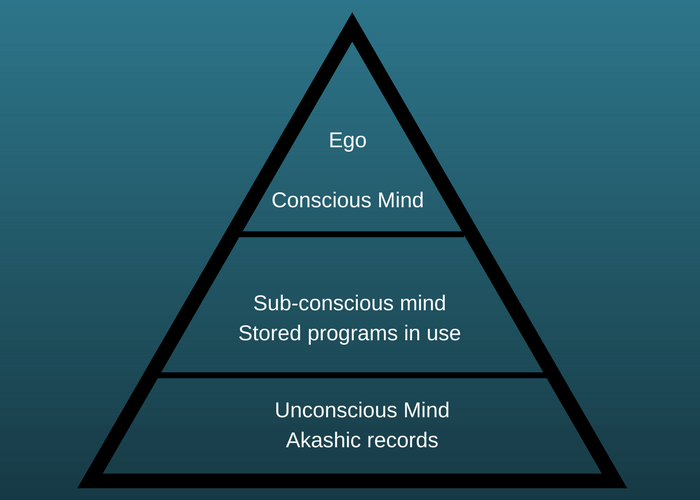
The unconscious feeds our sub-conscious mind which processes the information based on believes we currently hold and passes them on to the conscious mind – the ego. The ego thus receives information from our higher conscious or our lower conscious.
The ego then makes a decision. You have the choice to listen to your higher conscious or your lower conscious. We generally choose what we know based on emotions – which is often a habit from the lower conscious. Oftentimes these actions no longer serve you.
This is why we need to still the mind and listen to the answers to questions we ask ourselves.
Buddhism teaches that mindfulness is about living in the moment; or more precisely, being fully and consciously aware of the moment. To be mindful is to be in touch with the reality of truth.
The Vietnamese writer and Buddhist monk, Thich Nhat Hanh says:
“In mindfulness, one is not only restless and happy but alert and awake. Meditation is not evasion; it is a serene encounter with reality.”
It is possible to cultivate inner peace by being mindful. You can control your attention, therefore you can control mindfulness. You have to be deliberately concentrating on whatever you are doing.
For example, when you are in the shower, be consciously aware of the water. The sensation it leaves against your skin, the temperature. Smell the soap. Trying to smell the water really focuses the mind.
When you are not mindful of the present you are out of touch with reality.
However, should you choose to be fully conscious of the moment – feel the water, smell the soap, feel the sensation of the sponge against your bare skin – when you consciously notice all this, you experience the moment without any restrictions or limitations of consciousness…
…this is when you have a whole-brain experience, your mind is at rest, you feel inner peace and ready to tackle the day.
Meditation can be used for self-reflection. It is in moments of mindfulness when you observe the Self. When you meditate, you become the observer.

The Upanishads teach us that in an absolute conscious state of being we are not our mind and body, but the observer of our mind and body.
When you become the observer, your body talks to you. When you feel a twinge in a muscle, or slight pain in a vital organ, maybe an itch somewhere, all these sensations are subtle signs from your body telling you something is wrong. Or maybe right.
This, of course, is a metaphysical view, and if you believe meditation is for fairy believers, there is no way you will believe your body sends signals about blocked emotions you need to address. You will have to take my word for it. It is true. It is the unconscious mind trying to tell your conscious mind to change.
Therefore, to cultivate inner peace, and improve your health, learn to still the mind. Be in control of your mind, do not let mind control you. Observe your state of being. Ask yourself this: How peaceful do you feel when you are just observing something?
When you watch your mind in meditation, you will notice how thoughts drift in and out. You may also notice how thoughts can provoke the mind to wander, to chatter, to analyse; thoughts may even whip your mind into a frenzy.
This is what Buddhists call the ‘monkey mind.’ The subconscious mind that records our past experiences and tricks us into thinking the conscious mind is all-powerful. But the subconscious mind usually feeds the conscious mind with old values that no longer serve us.
It also has control over the monkey mind. You can stop the chatter once you learn how to take control of your mind rather than letting the monkey mind control you. Alternatively, teach the monkey new tricks, throw it fresh bananas.
You need to read to gather information and have new experiences to know anything. Otherwise, your monkey mind has little knowledge other than the crap it is already programmed with. Until you have information and learn new experiences, you have no knowledge. All you have is an opinion.
Plato said:
“Opinion is the medium between knowledge and ignorance.”
The more knowledge you have, the less ignorant you are. So if you have never tried mindfulness meditation, don’t dismiss it as spiritual bullshit. Learn to do mindfulness properly, and you will reap the benefits.
Your higher conscious mind has all the wisdom you ever need. And you can easily connect to your higher-conscious self. You do not have to meditate in a seated lotus position to tap into your reservoir of wisdom.
Another Plato quote:
“When the mind is thinking, it is talking to itself…thinking is the talking of the soul with itself.”
This is where the magic trick starts: ask yourself a question with a thought and you will receive a response by way of another thought.
However, to perform this trick properly you have to know whether the replying thought has come from the higher unconscious mind or the subconscious monkey mind.
You know this only through the practice of mindfulness. So learn to stop thinking. Every day, take time to do nothing.

A quick trick to cultivate the art of non-thinking. Stare at something for one minute. When, or if, a thought enters your mind, say ‘Stop’ and empty your mind.
The more you practice non-thinking, the stronger the mind becomes. The longer you keep your mind still, the more you pay attention to one thing. Your intention – your question. That is when you know the answer comes from your higher consciousness, and with experience, you will be able to sense that through feeling.
If you do find it difficult to stop the internal chatter, use it to your benefit. Rather than allowing your mind to run away with thoughts, focus on the thoughts you are having in relation to your question.
You may have to unravel memories like peeling an onion, but eventually, you should come to a point of self-realisation. This is another way of meditating – staying focused on your one thought and analysing it.
For example, you may ask a question in meditation and immediately remember an incident from your distant past. Rather than dismissing that thought or allowing your mind to become distracted, ask yourself why are you having that thought. What relation does it bear to your intention? Talk it through with yourself.
And be honest. Think about what you did to affect the outcome of the incident you are thinking of. Or what lesson you learned from the person you are thinking of. The memory is your unconscious trying to tell you something.
Remember this: every experience we have is so you can learn something about yourself.
Furthermore, by learning to sharpen your mind, you will begin to see through the veil of illusion and into the heart of Truth. Armed with wisdom, others will look to you for answers in any given situation.
So do you want to take control of your life and be a leader; or do you want to follow the blind that leads the blind?
Turn on your inner light and you see the world with more clarity!
Symbols are a powerful tool you can use for self-development. They are the language of the unconscious mind and appear to us through dreams, synchronicity and the experiences we have in life.
I appreciate that may sound like mystical woo-woo, but it is true. I explain how you can use numbers and symbols in the Number Symbolism guide. What’smore, I provide real-life examples of when numbers have been used to reach a moment of self-realisation or to make an important decision.
And that’s the true beauty of understanding the esoteric meaning of symbols. They are a a guide you want by your side because they will help you navigate every challenge you face in life.
The Vesica Piscis is a symbol you may find appearing to you in dreams and in walking life. It’s fairly common to find this symbol in religious iconography all over the world. But what does it mean exactly?
Most people in the West will recognise the Vesica Piscis is the Christian symbol of Jesus. But the symbol predates the Catholic church by thousands of years. In the East and Africa, the symbol is known as the Mandorla.
The origins of the vesica piscis are not known. Modern-day neo-pagans claim the symbol is Germanic as it was used by Norse peoples. But the symbol can also be traced to Pythagorean Greece, ancient Egypt, Mesopotamia, India, China and Africa. It’s the principle symbol that appears in the Flower of Life.
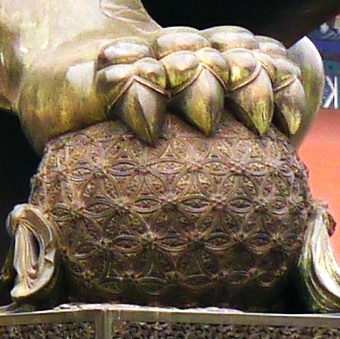
Regardless of its origins, the symbol is given the same meaning – creation. But the esoteric meaning of the Vesica piscis is much deeper than that. To benefit from symbolism as a self-development tool, you need to know the esoteric meaning of symbols.
It’s esoteric symbolism we teach you in all our symbolism courses.
In ancient Greece, this symbol was called the Ichthys, the offspring (creation) of the Syrian Goddess Atargatis. The Ichthys takes the form of fish. It is created by overlapping two circles. The almond shape in the middle is the Vesica Piscis.
Take a look at example below. This is a major clue to the deeper symbolic meaning of the vesica piscis.

I also show you how esoteric symbolism is being used for the same meaning today by modern civilisations. Mind, Body and Soul seems to be the prefered trinity.
The Vesica Piscis is not alone here – all the symbols used by modern “authorities” have their origins in ancient cultures and date back thousands of years.
Every culture has their own interpretation of symbols, but if you treat them as pieces to a jigsaw, they reveal the bigger picture.
Let me show you.
The four examples below are only a small sample, but the symbolic meaning given for the vesica piscis are:
What follows is an explanation of how each of the four meanings above actually have the same meaning once you unpack the symbolism in the interpretation.
Science shows us that nature has to find balance in order for creation to flourish. We see this in the sub-atomic particles of an atom. Male protons (positive charge) bind with female electrons (negative charge) to try and find equilibrium.
When positive and negative charges of an atom find a balance, a perfect creation is formed. When they cannot find equilibrium, the female electron will look for another proton.
If the atom cannot find equilibrium, the neutron kicks in and the atom neutralises. This only happens if there is more or less of a balance of electrons and protons. If there are more of one than the other, an imperfect creation forms.
An equal amount of electrons and protons balance out an atom.
The vesica piscis is the shape in the centre of two interlocking circles. Let’s say one of the circles is the male energy and the other is the female energy. Male and female are opposites that create a balance in a relationship just as protons (male) and eletrons (female) create balance in an atom.
The centrepiece is a perfect creation. But only when the circles are symmetrical – balanced.
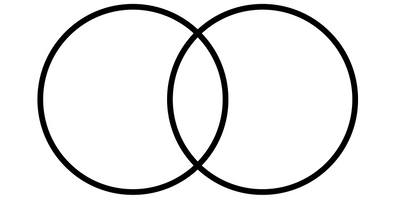
You can see from the picture above, the centre is an almond shape. I will come on to that later. But can you also see that the symbol above makes the “Ichthys” – the fish symbol used to represent Jesus in Christianity?
If not, check this out:

Jesus Christ is a symbol of God in man. Essentially he represents enlightened man. Man becomes enlightened when ego-consciousness becomes aware of the split-off content buried in the unconscious.
This is the union of heaven and earth. Heaven is the Mind which receives the ‘voice of God’ the superconscious. Earth is the personal unconscious, the repository for our programs which prompt habitual behaviours, beliefs, attitudes, perceptions, character traits etc.
It is when you program the personal unconscious with a higher knowledge of your True Self that you improve your life and your relationships.
Consciousness essentially creates our experience of life. So one way to interpret the vesica piscis is that we need balance in our lives to consistently act appropriately.
Aristotle: “We are what we repeatedly do. Excellence then, is not an act, but a habit.”
However, that easier said than done. How do you know whether you’re balancing your animal instincts and your divine qualities?
Ordinarily it would be difficult to perform a balancing act. However, symbols will guide you.
The Christian idea that the Ichthys is the ‘union of heaven and earth’ dates back to earlier cultures. The ancient Greeks for example used the idea of Father Sky for Heaven and Mother Earth for Earth.
“First look at the things as keenly and as intently as you possibly can; then only let the feeling which expands to life, and the thought which arises in the soul, take possession of you. The point is that the attention should be directed with perfect inner balance upon both phenomena. If the necessary tranquillity be attained and you surrender yourself to the feeling which expands to life in the soul, then, in due time, the following experience will ensue.” ~ Rudolf Steiner, How To Know Higher Worlds
We see the same concept for the symbolic meaning of vesica piscis in Judaism. The flower of life is also devised by interlocking circles – seven of them. Seven is a feminine number representing emotion. Emotions are measured on a scale of love to fear. This will become more apparent later when we discuss the almond connection.
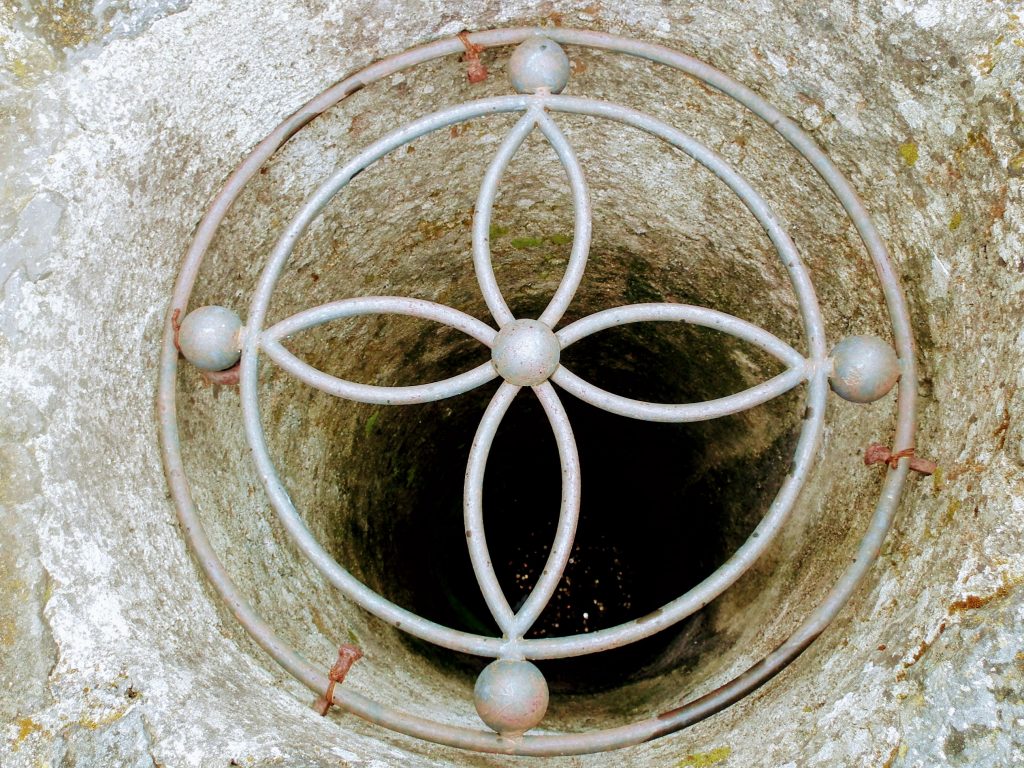
The four petals are the foundations of creation that develops from the three – the beginning of consciousness which ultimately evolves into reality. Just as atoms are the building blocks of creation. Note how the root of the flower of life are four vesica piscis.
In the image above, you will also note that the root of the flower of life is positioned over a well. A well is used for storing water and in ancient symbolism – as it is in nature – water is used to symbolise that all life (creation) comes from water. This photo was taken at the Castello Aragonese on the island of Ischia, just off the coast of Naples, Italy.
That’s also the reason why a fish is used as a symbol for Jesus. Fish live in water – the superconscious.
The Catholic church still uses fish and water to represent creation. The bishop’s mitre is a prime example. Examine the image below and you can see that the fold in the mitre looks like the open mouth of a fish.
The bishop in this image also has a crescent moon behind him, a feminine symbol associated with water because the moon is known to change the tides. You may also note that the prongs look like the horns of the devil – which actually represents base consciousness.

The oldest discovery of the vesica piscis dates back some 6000 years and was found in the Temple of Osiris in Abydos, Egypt. Osiris is a Sun God, the son of Nut and Geb, Father Sky and Mother Earth.
Osiris, therefore, represents the creation of the male and female union. A child represents the creation of man and woman. As a Sun God, he represents illumination of the higher self. His brother Set (given to the English term, sunset) is the God of storms and disorder. When you live in base consciousness you experience turmoil and chaos.
It is from ancient symbolism that Carl Jung developed his theory of the self and shadow self. A 20th Century concept which ancient cultures knew about 6000 years ago! Yet today, we don’t really know how consciousness works.
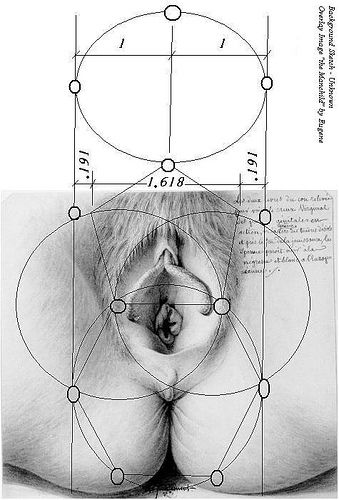
Before Isis came to prominence as the Mother Goddess of Egypt, there was the ancient goddess Ma’at, the Cosmic Mother who oversees the order of the world and restores chaos. She brings the Universe into balance. Sounds like an electron.
The vesica piscis is said to represent the vagina of the goddess Ma’at. When the male seed is planted into the female ovary, their creation grows in the womb.
The ancients used nature, including the dimension of human anatomy, as inspiration for their sacred geometry.
The vesica piscis symbol was also used to represent the vulva of Goddesses in Celtic and Norse cultures as well, as we see in the Goddess’ Garden at Glastonbury.
In Christian art, as we see in the introductory image of this article, we often find Jesus and other saints painted into a Vesica Piscis as though emerging from the womb of the Cosmic Mother.
But the symbol is mostly associated with Mary Magdalene, the ‘Cosmic Mother’ of the Christian Church. Thus again, we see Jesus as creation/pure consciousness.
This is the Washington Monument in the US capital. The obelisk represents the male phallus. And it is ensconced in the Vesica Piscis, the female vagina.

A phallus symbol is actually esoteric symbolism for the active principle; the seed of an idea, reason and willpower. Symbols representing the womb – the symbolic meaning of the vesica piscis being one of them – is representative of the female principle; fertility, patience and nurturing.
And thus we have an example of esoteric symbolism in modern times representing the union of the God and the Goddess, the protons and electrons of an atom, the male and female energies of nature. This balance is necessary for creation to flourish.
Earlier in this article, I mentioned the centrepiece of the Vesica Piscis resembles the shape of an almond. The ancient symbol, the Mandorla – which is the equivalent of the Vesica Piscis – means, ‘almond.’
The mandorla is found throughout the Celtic Tribes of Europe but is also used by the Igbo people of West Africa, which share so many similarities with Judaism, mainstream media has called them “the lost Jews.”
But more critically, the almond is the same shape as the amygdala, described by Science Daily as:
“an almond-shaped set of neurons located deep in the brain’s medial temporal lobe. [The amygdala is] shown to play a key role in the processing of emotions…”
The image below is an artefact from a Catholic church. It is the shape of an almond and the centre-piece of the Vesica Piscis – thus representing the amygdala, the seat of emotions.
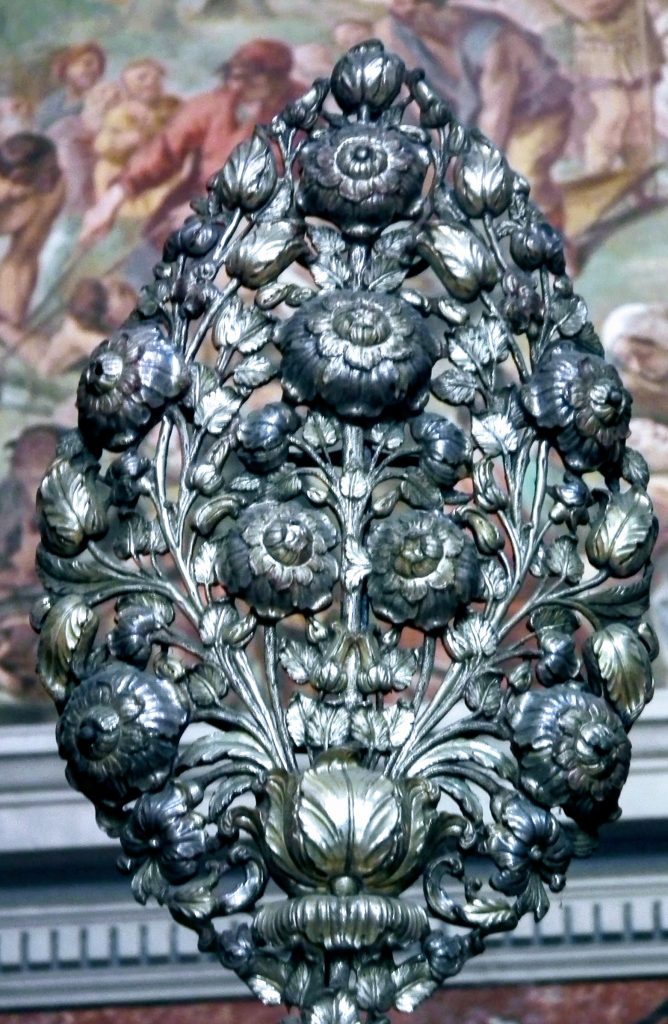
Emotions, impact thoughts, and thoughts impact actions. You are responsible for your behaviour, and as the natural laws determines, your thoughts, emotions and actions create your reality.
Furthermore, thoughts, actions and emotions are the basis of the triangle of manifestation. Just to remind you, the ‘magic’ number three is also regarded as the number of manifestation – or if you like, creation.
So just one more point.
In geometry, if you measure the distance where the two circles of the vesica piscis meet and the height at the widest point of the “bladder of the fish” you get a ratio of 265:153 which equals 1.7320261. This is as close as you can get to the square root of three.
Furthermore, in ancient Greece, during the time of mathematicians, Pythagoras and Archimedes, 153 was known as the ‘measure of the fish’.
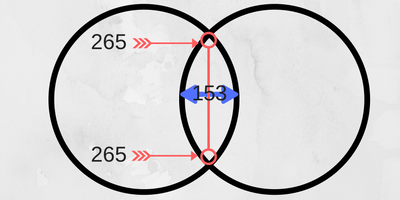
This expression comes from the Bible story in John 21:11 that tells the second miracle of Jesus. His fisherman disciples had not caught anything all day, so Jesus tells them to throw the net over the right side of the boat:
“Simon Peter went up, and drew the net to land full of great fishes, a hundred and fifty and three: and for all there were so many, yet was not the net broken.”
Just to round this off, let’s look at the number of this verse – 21:11. In another form of ancient mathematics known as gematria, 21 equals 3 (2+1). Three is the number of creation. Eleven is a master number.
Master numbers are perfect creations. The eleven is one and one, which makes two – the perfect balance of male and female which by nature pro-create. The chemical union of two creates three.